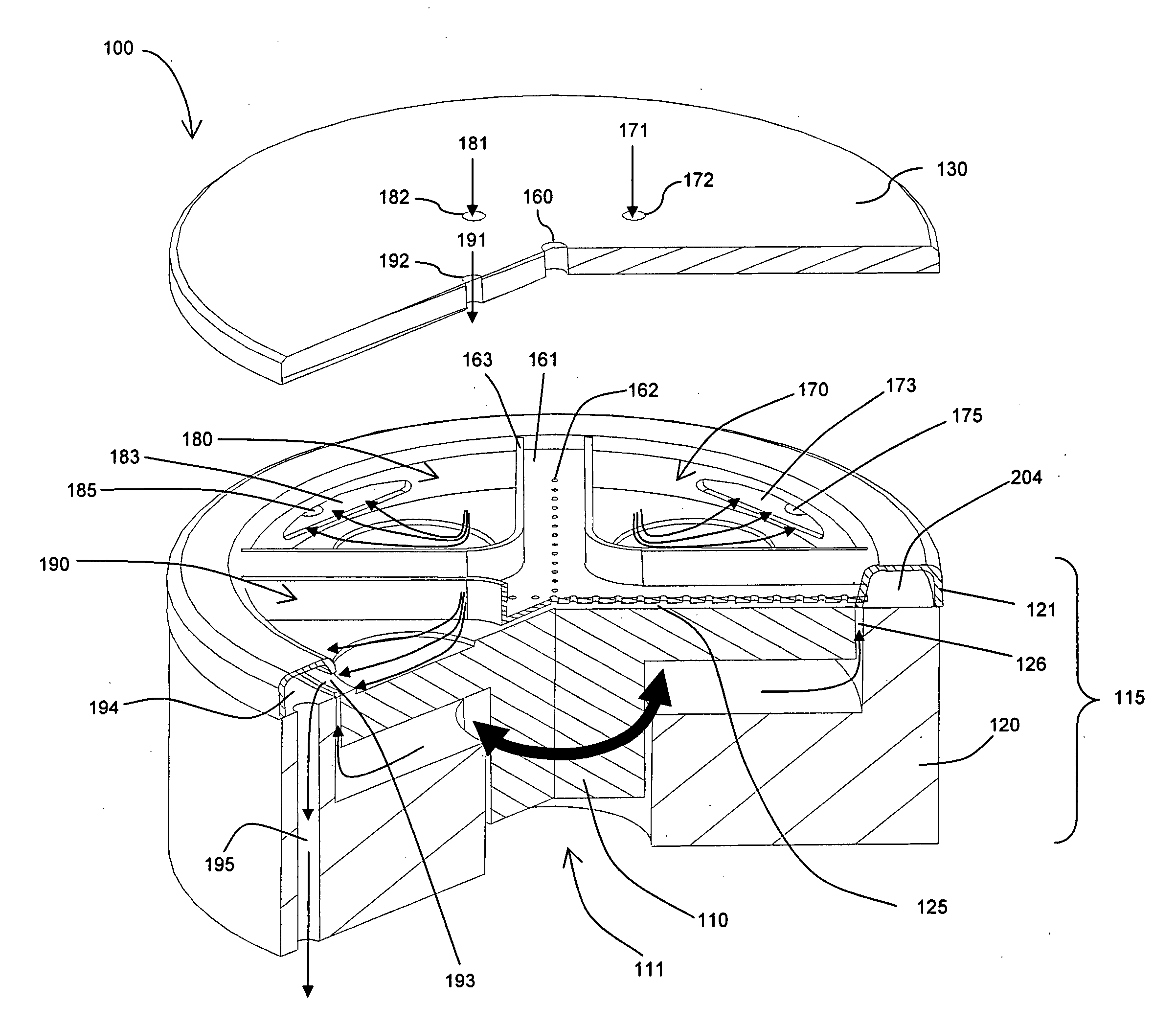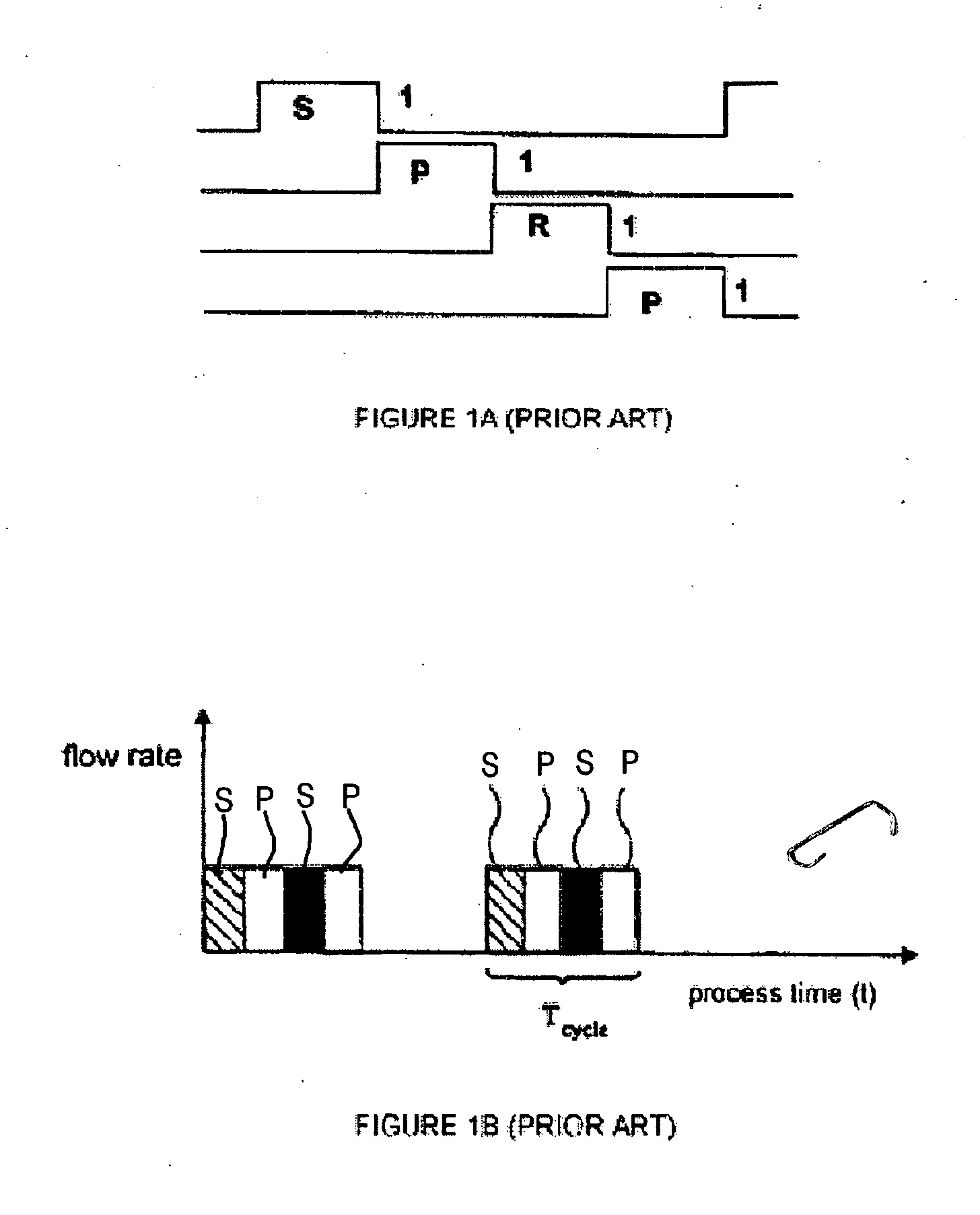Method and apparatus of time and space co-divided atomic layer deposition
a technology time-space division, applied in the field of atomic layer deposition apparatuses and methods, can solve the problems of significant downtime, difficult application of cvd and pvd methods in high-throughput operations, and insufficient performance of conventional cvd and pvd methods in forming uniform thin films over substrates with high aspect ratio features
- Summary
- Abstract
- Description
- Claims
- Application Information
AI Technical Summary
Benefits of technology
Problems solved by technology
Method used
Image
Examples
Embodiment Construction
[0029] The inventors have observed several problems associated with prior art multi-wafer ALD systems. For example, in systems employing the space separation method, variation of pulsing times (variable pulsing frequency) between reaction spaces is not possible. As another example, in systems employing the space separation method, moving parts supporting wafers are also contacted with reactant gases. Film deposition occurs on the wafer supporting moving parts as well as wafer surfaces, leading to problems associated with particle generation. This is particularly problematic in systems configured for in situ (or direct) plasma generation using an RF electrode placed in the reaction space, in which metallic film deposition on reactor walls may lead to electrical shorting between the walls of the reactor and the RF electrode. This may significantly impede, even prevent, plasma generation.
[0030] Preferred embodiments of the present invention resolve the problems and shortcomings associ...
PUM
| Property | Measurement | Unit |
|---|---|---|
| Time | aaaaa | aaaaa |
| Pressure | aaaaa | aaaaa |
| Flow rate | aaaaa | aaaaa |
Abstract
Description
Claims
Application Information
 Login to View More
Login to View More - R&D
- Intellectual Property
- Life Sciences
- Materials
- Tech Scout
- Unparalleled Data Quality
- Higher Quality Content
- 60% Fewer Hallucinations
Browse by: Latest US Patents, China's latest patents, Technical Efficacy Thesaurus, Application Domain, Technology Topic, Popular Technical Reports.
© 2025 PatSnap. All rights reserved.Legal|Privacy policy|Modern Slavery Act Transparency Statement|Sitemap|About US| Contact US: help@patsnap.com



